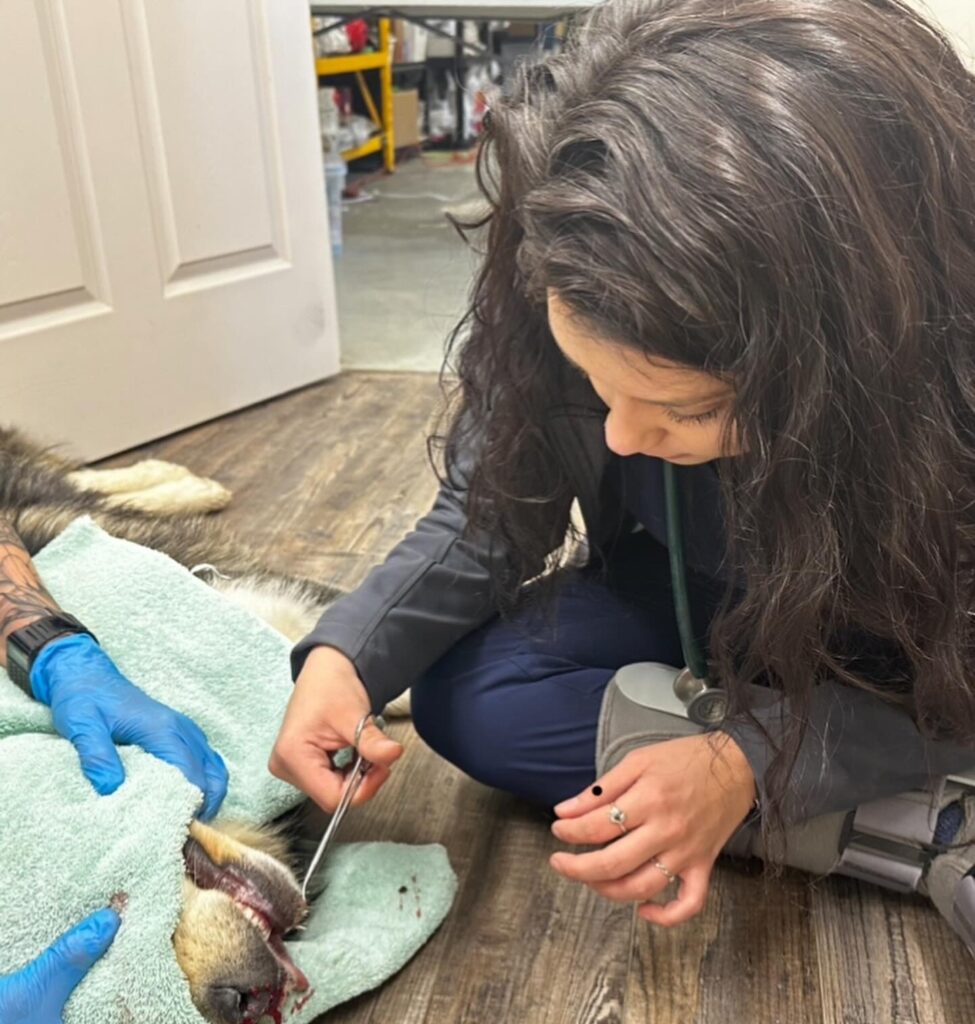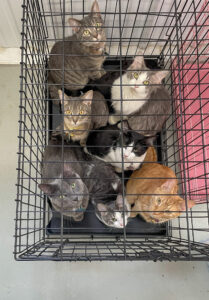In the heart of the Midwest, amidst the rolling plains of South Dakota, lies the Rosebud Reservation, home to the Sicangu Lakota Oyate. It’s a land rich in culture, tradition, and history but also one marked by challenges, including limited access to veterinary care. However, Summer Lara (Sisseton-Wahpeton Oyate), Lecia Mata (Red Lake Nation), and Kena Hayes (Sicangu Lakota), are helping to change that.
Driven by a passion for animal welfare and a commitment to their Indigenous roots, these CSU vet students organized two trips to the Rosebud Reservation. Their mission is multifaceted: to showcase Indigenous representation in the veterinary medicine field, honor tribal community and culture, underscore the critical need for access to care, and provide invaluable hands-on experience to aspiring veterinarians.
At the core of their work lies a powerful message: representation matters. Indigenous peoples have historically been underrepresented in the veterinary profession, facing systemic barriers and disparities. By actively participating in outreach initiatives like those to Rosebud, these students are breaking stereotypes and serving as role models for future generations.
Kena Hayes reflected on the trip, “Representation is one of our most important missions. We knew we were making an impact when a child at one of our clinics looked up at Summer and said, ‘You’re the doctor?!’ This moment reinforced how vital it is for clients to see themselves reflected in the professionals who serve them.”
Each trip to Rosebud is meticulously planned to maximize impact with the support of CSU faculty and partner veterinarians who regularly work in field medicine, with special thanks to Wamakanskan Wawokiye Oti, Kathy Woodenknife, and Robbie Clairmont. The students offer a range of veterinary services to the community’s beloved animal companions, including physical exams, vaccinations, and treating sick or injured animals. Yet, their efforts extend far beyond clinical care.

One of the group’s key objectives is to foster a deeper understanding and respect for culture. The additional veterinary students who joined them were required to complete cultural sensitivity training. The students were invited to attend and participate in a round dance and smudging ceremony and joined the community liaison for fishing. The group knows that a fundamental necessity is understanding the community you are providing care to and providing care with empathy and compassion.
Moreover, the trips serve as a reminder of the critical need for accessible veterinary care in underserved communities. Many residents of Rosebud lack the resources to travel long distances to seek veterinary assistance, leaving their animals vulnerable to preventable illnesses. By bringing care directly to their community, the students address a pressing need while promoting the well-being of animals and their human companions.
The experience is transformative on a personal and professional level for the veterinary students involved. Beyond honing their clinical skills, they gain invaluable insights into the intersection of animal health and community needs and learn what the “spectrum of care” can mean when they become veterinarians providing care. These lessons are just as essential to their education as any textbook knowledge.

Looking ahead, the CSU students remain committed to serving Rosebud and similar communities in need. They recognize that true progress is measured not by the number of animals treated but by the enduring relationships built and the lasting impact made.
“As more Indigenous students come to CSU for their veterinary education, we hope they will continue cultivating this program and the long-lasting partnership we’ve invested in. In our Dakota/Lakota culture, we rely on our kinship value of mitakuye owasin or all of my relations and the value of reciprocity,” shared Summer Lara. “This is a value we want to bring to CSU. It’s an incredible privilege and opportunity to attend veterinary school, but we wouldn’t be here without the support of others. Connections are vital to our success and this program is one of the ways we can do that.”
As students advance through their time in vet school, they hope the program receives additional support. These first trips were made possible with the support of their sponsor, Elanco. Their goal is to expand to other tribal communities and offer additional veterinary services, including surgery. They also aim to maintain genuine connections with the community and stress the importance of reciprocity.
In the footsteps of their ancestors, these Indigenous CSU vet students are charting a new course—one defined by compassion, collaboration, and cultural respect. In doing so, they are not only healing animals but also breaking barriers for future Indigenous veterinarians.
